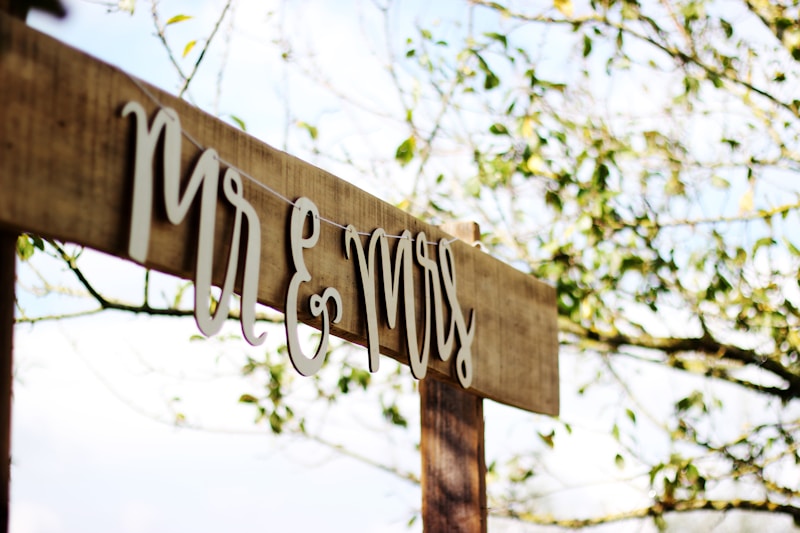Expectations vs. Realities in Bridal Budgeting: A Comprehensive Guide
Expectations vs. Realities in Bridal Budgeting: A Comprehensive Guide
Introduction to Bridal Budgeting
When it comes to planning a wedding, effective budgeting is essential for turning dreams into reality. While many couples envision a grand celebration with lavish details, the truth is that financial constraints can often lead to feelings of disappointment. This article explores the critical aspects of expectations vs. realities in bridal budgeting, helping couples navigate their financial journey towards their big day.
Understanding Bridal Budgeting
Bridal budgeting encompasses all costs associated with planning a wedding. From the venue to the flowers, every detail requires careful consideration. Many couples start with high expectations, often influenced by social media, weddings they’ve attended, or celebrity events. However, understanding the actual costs and what they can realistically afford is crucial. Let’s delve into common expectations and the realities that often follow.
Common Expectations for a Wedding Budget
| Expectation | Reality |
| Lavish Venue | Most couples find themselves limited to local venues that fit within their budget. |
| Designer Wedding Dress | Many couples opt for off-the-rack dresses or rental options to stay within budget. |
| Full-Service Catering | Couples may consider buffet options or food trucks as cost-effective alternatives. |
| Extravagant Entertainment | Hiring a DJ instead of a live band can significantly reduce costs. |
| Luxury Floral Arrangements | DIY or simplified arrangements are common to save money. |
The Real Cost of Weddings
According to recent statistics, the average cost of a wedding in the United States is around $28,000 as of 2023 although this number varies greatly depending on the location and season. Couples often underestimate the expenses associated with various aspects of their wedding. Here’s a breakdown of typical costs that many couples might not consider initially:
- Venue Rental: This can represent a significant portion of the budget. Popular venues often require deposits well in advance.
- Catering Costs: Including food, beverages, and service fees can escalate quickly, especially for larger guest lists.
- Wedding Attire: The costs of both the bride's and groom's attire can add up, including alterations and accessories.
- Photography and Videography: Capturing the day can be a major expense that is often overlooked until later in the planning process.

Creating a Realistic Wedding Budget
To achieve a balance between expectations and realities, couples should follow these steps when crafting their wedding budget:
- Set a Clear Budget: Determine how much you can afford and stick to it. Consider funding sources like savings, family contributions, and any potential loans.
- Prioritize Expenses: Identify what elements are most important to you both; this may involve tricky discussions but is essential to avoid overspending.
- Research Costs: Gather estimates and quotes from vendors to get an accurate understanding of potential expenses.
- Be Flexible: Adjust your wants based on what is feasible within your budget; for instance, consider different venues or alternatives for catering.
- Track All Expenses: Keep an ongoing tally of what you’ve spent and what is left to avoid any nasty surprises as the date approaches.
Dealing with Unexpected Costs
Regardless of how meticulously couples plan, unexpected costs seem inevitable. Here are common areas where couples usually face additional expenses:
- Last-Minute Add-ons: Packages can sometimes lead to unexpected fees if not carefully scrutinized.
- Guest Count Changes: More guests can mean added costs, particularly when it comes to food and drinks.
- Weather-Related Issues: Outdoor weddings can bring unforeseen weather complications, leading to added rentals like tents or heaters.
Balancing Expectations with Reality
Every couple wants their wedding to be unforgettable, but balance is key. Here are practical tips to manage expectations while keeping the budget intact:
- Stay Informed: Join online forums or bridal groups where you can share experiences and learn from others' budgeting tips and tricks.
- Consider Alternative Choices: Weekday weddings or off-peak season dates can significantly reduce your overall costs.
- DIY Elements: From invitations to centerpieces, getting crafty can not only save money but also add a personal touch to your wedding.
- Limit Guest List: A smaller, more intimate wedding can not only reduce costs but may also enhance the overall experience.
- Focus on the Experience: Rather than fixate on lavish details, concentrate on the joy of the day and creating lasting memories with your partner and loved ones.
Summing It Up: Key Takeaways
Understanding expectations vs. realities in bridal budgeting is crucial for a successful wedding planning experience. Couples should remember that while dreams of a fairy-tale wedding are common, aligning those dreams with financial realities can lead to a more satisfying outcome. Start with a clear budget, prioritize what truly matters, and remain flexible throughout the planning process. By being aware of potential pitfalls and maintaining open communication, couples can navigate the challenging waters of wedding budgeting successfully.
In conclusion, it’s essential to embrace the planning journey with realistic expectations about bridal costs, knowing that the ultimate goal is to celebrate love. Remember that while the details matter, the relationship you’re cultivating alongside is what will truly endure beyond the big day. Happy planning!
